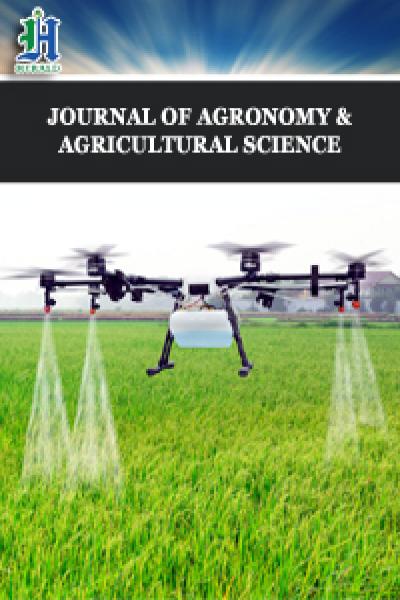
Importance of World Plant Reservations for The Preservation of Crop Germplasm (A Review)
*Corresponding Author(s):
Ladislav BláhaCrop Research Institute, Prague 6.161 906, Drnovská 507, Czech Republic
Tel:+ 420 02257922065,
Email:opidum@volny.cz
Abstract
This occurred after 1492 when Europeans began to occupy the Amazon region. Indian populations used 138 or more species (crops) probably in a high state of domestication. The following decline of their populations has resulted in a decreasing number of crops used. The second unfavorable trend, the growth of cultivar similarity occurred mostly in the 20th century. Breeding to increase yield, quality and resistance to pests and diseases have led to the narrowing of the gene pool and genetic diversity. Cultivars are more similar from the morphological and physiological view. It is a disadvantageous process.
It can be mentioned that there is a large number of wild plants so far not explored, which are growing in extreme localities and thus probably have the desired properties for new climatic and soil conditions. We should search for them not only in traditional but also in unexplored nature reserves.
Keywords
Gene conservation; Genetic erosion; Genetic resources; New crops
INTRODUCTION
Currently, genetic diversity is still eroding, and the problems posed by this erosion on the robustness of production systems or the ability of agriculture production to adapt to climatic hazards are beginning to be seen. Movements are forming to save also old varieties. It becomes necessary to put tools and programs in place so as not to lose biodiversity. (INRA, https://fr.wikipedia.org/wiki/Ressource_génétique )
GENETIC RESOURCES
Plant genetic resources
It is estimated that around 10,000 plant species have been used for human food since the origin of agriculture. Today, only about 150 plant species make up the diets of the majority of the world’s population. Of these, only 30 crops provide 90 percent of the world’s calorie intake, and just 12 species provide over 70 percent of food. And what is even more of interest, only four crops-rice, maize, wheat, and potatoes-represent over 50 percent of the food supply, but data from individual sources of information differ [5]. Genebanks in Europe maintain approximately one-third of the world’s ex-situ crop germplasm collections. Very good is development conservation of genetic resources et situ in developing countries [6]. From this point of view, very important is also international agreements, the convention on biological diversity, to protect nature and conserve genetic resources [7].
Crops plants share a great deal of their genetic property with wild progenitors, but only part of the genetic diversity of the wild progenitors is present in their derivatives. Another source of diversity is the more distantly related species. Their exploitation is more laborious and time-consuming, but they may possess diversity which is absent in the primary gene pool.
Crop Wild Relatives (CWR) are species closely related to crops (including crop progenitors) and are defined by their potential ability to contribute beneficial traits to crops, such as pest or disease resistance, yield improvement or stability. They have also increased the nutritional contents of crops, including protein in durum wheat, calcium in potato, and Provitamin A in tomato. More than 1,700 new plants have been discovered including crop wild relatives in the past year, including species that could help provide food in the future. For example special species of five new types of Manihot, new species of climbing vine Mucuna, used in the treatment of Parkinson’s disease. Seven new species of Aspalathus, etc., The discovery of wild crops relatives was important because contemporary crops had been bred for high yields and had often lost their genetic diversity and resilience to drought and pests. Crop wild relatives - their genomes have the genes that will enable resilience against biotic and abiotic stresses [8].
Roughly 50,000-60,000 species of CWR are known world wide, that is to say, they have the same genus as crops. 700 CWR is considered the highest priority from a global perspective, because of containing the primary and secondary gene pools of the world’s most important food crops. Food and agriculture production is dependent on genetic resources originally domesticated elsewhere on the Earth and subsequently used and developed in other countries and regions. More detailed pieces of informations can be obtained [9,10]. Figure 1 illustrates the origins of individual crops.
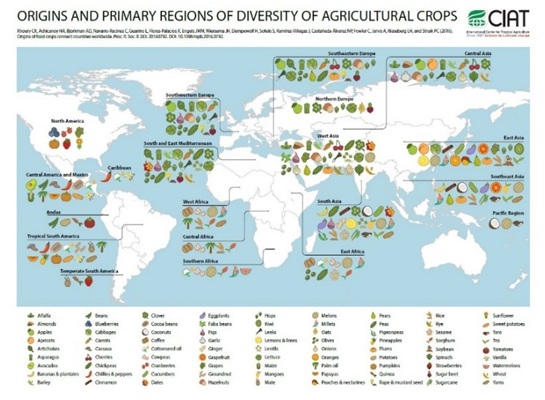
https://cgspace.cgiar.org/handle/10568/68405
From the general view the domestication of plants and the origin of agricultural systems is in general view presented and discussed by Rindos [11].
Contemporary used basic system of genetic resourcesconservation strategy (short information)
The main categories of retained genotypes are primarily:
• Related wild species and weed races in the same genus
• Unimproved landraces (folk varieties) and special purpose types from the areas of diversity
• Pure-line selections or open-pollinated commercial varieties from old agricultural areas where production levels have remained largely unchanged in the last half-century
• Obsolete varieties
• Advanced cultivars, modern elite varieties (HYV’s) and F1 hybrids developed by scientific breeding and grown in areas of modern intensive agriculture. Composites and synthetics evolved through plant breeding also belong to this class
• Other products of plant breeding programme or genetical studies, which include breeding lines, breeding stocks, mutants, etc., These categories also indicate both an evolutionary continuum linking prehistoric wild forms with present day cultivars, and an ecological continuum linking wild and partly domesticated taxa with domesticated forms.
Basic conservation systems include the following categories:
• Conservation in-situ
• Conservation ex-situ
• Base collections
• Active collections
• Core collections (10% of all resources)
A more information-general view can be obtained at the publication [12,13].
Note
Important center for crop wild relative diversity is Europe [14,5]. Major crops such as oats (Avena sativa), sugar beet (Beta vulgaris), apple (Malus domestica), annual meadow grass (Festuca pratensis), perennial ryegrass (Lolium perenne) and white clover (Trifolium repens), have wild relatives in Europe. Many minor crops have also been developed and domesticated in the region; such as arnica (Arnica montana), asparagus (Asparagus officinalis), lettuce (Lactuca sativa), sage (Salvia officinalis), raspberries and blackberries (Rubus sp.), mints (Mentha sp.) and chives (Allium sp.)
HISTORY OF GENETIC RESOURCES
Evolutionary changes during plant domestication
The possible changes in plant species (in different directions) due to domestication have discussed the work of Hawkes Physiological adaptability has increased into wider ecological range (not at every species) [16-18]. There are really new different ecological preference. Frequent is a loss of photoperiodic response and lack of normal pollinating organs. Large change is a loss of defensive adaptations, such as hairs, spines, thorns, etc., increased susceptibility for diseases and pests is a negative phenomenon; In the case of growth and development of seeds, a new is that flowering and fruiting simultaneously/uniformly; Seed germination uniformity became synchronous and uniform. Perennial habit changed from the perennial to the annual. There is also a loss of seed dormancy. Multi-year species have changed to one-year. Lack of shattering or scattering of seeds and sometimes may have lost the dispersal mechanism completely. A new is developing of seedless parthenocarpic fruits. From the morphological view, for example, pores for seed dispersal (poppy) are absent, cereal awns are absent or present, rachis or rachilla of cereals changed from the brittle into not at brittle, potato stools have shortened. Sexual reproduction became absent or reduced. Change from the outbreeding into inbreeding mechanism occurs.
As in any group of plants in nature, the contemporary and future evolution depends upon the availability of genetic diversity. The future crop evolution depends upon demands that may emerge from existing crops and constraints which may develop.
Short historic review
Sites of early farming which were discovered through efforts of archaeologists can definitely prove the presence of a cradle of agriculture on the site. Such sites of early farming have been discovered in Thailand (11,000 BC), Near East (9,000 BC) and Mexico (6,000 BC.) [16]. Suggested that generally, agriculture began not once but several times, more or less simultaneously and in different regions of the world. His concept envisaged centers of agricultural origin from which farming spread into one or more regions. According to him, the following basic centers and regions of diversity exist.
Nuclear centres and regions of diversity of domesticated plants after Northern China (China, India, South-East Asia), The Near East (Central Asia,The Near East, The Mediterranean;Ethiopia; West Africa),Southern Mexico (Meso America), Central to Southern Peru (Northern Andes,Venezuela, Bolivia) Analysis of the relationships among centers of biodiversity, centers of cultivation, breeding programs and gene reservoir spectrum of plant genetic resources states in his work [16,19]. Figure 2 shows genetic composition, productivity level and potential value of breeding of different genetic resources defined many years ago [19].
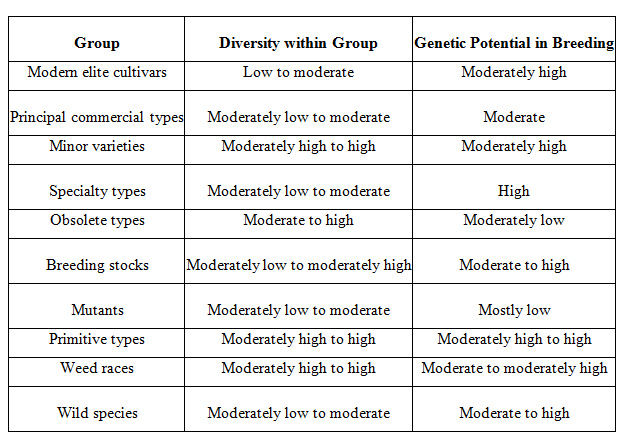
UNSATISFACTORY SITUATION: SMALL AMOUNT OF CROPS FOR FOOD FOR HUMANITY
It is, therefore, necessary to extend the spectrum of crops and the variability of existing ones [20]. It is possible to conclude, on the basis of current knowledge, that despite the successes of molecular biology, nature still presents a large source of new genotypes (semi-finished products for plant breeding). That is to say, there is a possibility to stop the threat of genetic diversity decrease.
GENETIC EROSION
The prevailing type of vegetation and the diversity of habitats determine for most species their level of occurrence, including their variability in localities. It is about main factors: the area effect, habitat diversity, vegetation type effects of area, habitat diversity, climatic district, species richness, mean altitude, annual precipitation, the temperature in different year seasons at the analyzed region [21]. Endangered species suffer from varying degrees of genetic erosion. Small populations are more susceptible to genetic erosion than larger populations. It can be said that the main driving force is probably the economic pressure on the price of crop production (growing crop areas with minimal soil treatment).This is a very old problem. Very interesting is the information provided by Clement concerning the beginning of genetic erosion. The author states: “There may have been 4-5 million people in Amazonia at the time of European contact. These people cultivated or managed at least 138 plant species in 1492. Many of these crop genetic resources were human artifacts that required human intervention for their maintenance, i.e., they were in an advanced state of domestication”. However, in the following historical epoch, there was a relationship between the decline of Amazonian Amerindian populations (the negative influence of Europeans) and the loss of their crop genetic heritage [22-25]. This relationship was influenced by the crop’s degree of domestication, its life history, the degree of landscape domestication where it was grown, the number of human societies that used it, and its importance to these societies.
Amazonian crop genetic erosion probably reflects an order of magnitude loss, and the losses continue today. The loss of variation in crops due to the modernization of agriculture has been described as genetic erosion. Genetic erosion of cultivated diversity is reflected in a modernization bottleneck in the diversity levels that occurred during the history of the crop [26-34].
GENETIC RESOURCES IN WORLD NATIONAL PARKS AND RESERVATIONS-FUTURE FOR GENE BANKS?
It would be a step forward even if a new species or species related to current crops (for breeding) could be only used in some areas. The search for new genotypes in national parks and other localities is indisputable from the point of view of contributing to genetic diversity. In case of creation of the new genetic resources, there is also very interesting problematics of the reintroduction of extinct species to nature.
• In the case of the utilization of new genetic models, we can create them on the basis of their analysis of the physiological models of plants for individual environments
• Due to long-term genetic erosion, the increasing similarity of varieties exists. It is necessary to use the opportunities offered by nature, i.e., of national parks where a lot of so far unknown and interesting plants species exist
• A small number of crops for human food are very disadvantageous from multiple points of view. Plant genetic resources are the basis for our life and, directly or indirectly, support the living of every person on Earth. Plant genetic resources consist of a variety of seeds and planting material of traditional varieties and modern cultivars, crop wild relatives and other wild plant species. The conservation and sustainable use of genetic resources are necessary to ensure crop production and meet the growing environmental challenges and climate change
• The study of structure, functions, and dynamics of both natural and man-made/modified ecosystems in a planned manner would be also required
• Ex situ conservation is the basic preservation and propagation of species and populations, their germ cell lines, or somatic cell lines outside the natural habitat where they occur. This method maintains the genetic diversity extant in the population in a manner that makes samples of the preserved material readily available. it includes botanical gardens, greenhouses, and the preservation of seeds or other plant materials in germplasm banks under appropriate conditions for long-term storage
The important discussion about the role of and barriers to in situ conservation is analyzed at the results of the National Research Council [36].
Note
An Important issue is the“opposite” problem: importance of species reintroduction to Nature
From the physiological view, there is also a possibility to find a new physiological model [41]. There is also option to use forgotten-crops as a-the-future crops-of-food [42]. The source of the new genotypes-genetic resources can be found not only in the world nature plant centers. (The Amazon, South America-Chile etc.,). There is a possibility to search for and use model plants with stress resistance from other different localities for physiological research. For example, there are no presented examples of crops, but examples of two interesting extremely dry-resistant plants. The first example is boscia salicifolia oliv (Figures 3 and 4).
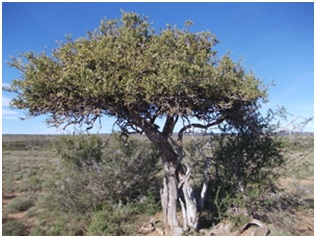
http://tropical.theferns.info/viewtropical.php?id=boscia salicifolia
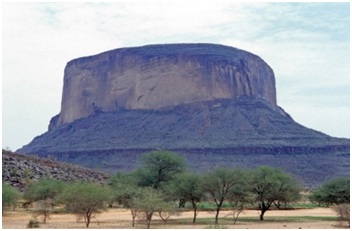
http://tropical.theferns.info/viewtropical.php?id=boscia salicifolia
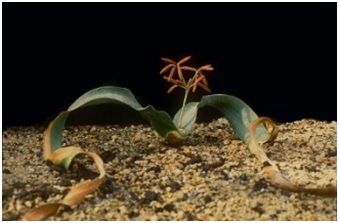
http://tropical.theferns.info/viewtropical.php?id=boscia salicifolia
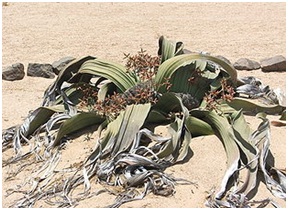
http://tropical.theferns.info/viewtropical.php?id=boscia salicifolia
RELATIVELY LITTLE ATTENTION IS GIVEN THE QUALITY AND ROOTS OF SEEDS IN NEW GENETIC RESOURCES
Seed quality is affected by the location of seed on the mother plant, by environmental conditions and by storage conditions. The roots are, from the physiological view, the most sensitive part of the plant. The root system functions as a control center with rapid transmission of information to other plant parts (“plant brain”). It is suitable to make a selection for cultivar resistance to stress already at the seed germination stage and on the basis of the quality of the plant root system (Figures 7-12). It is possible to make a selection at this developmental phase, on the basis of the seed and seedlings traits. Quality of the embryonic roots is important for the following growth and development of plants. This is a general biological regularity in nature.
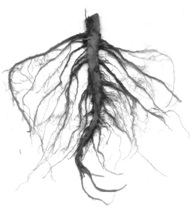
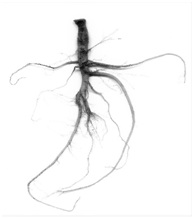
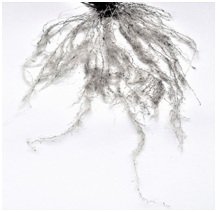
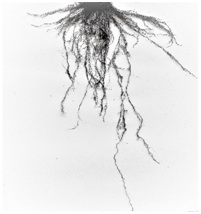
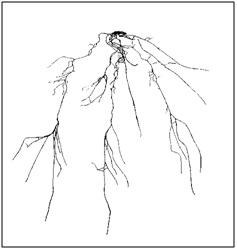
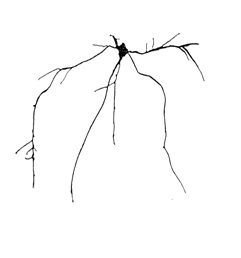
It was concluded on the basis of laboratory testing of seed germination speed, field emergence and seedling growth under different stress conditions simulated by subnormal water level and extreme high and low temperatures, that the plant materials (initial breeding materials and cultivars) which do not tolerate extreme temperatures and temperature changes during germination, have during vegetation period low water use efficiency and are intolerant to abiotic stressors already at the seed sprouting.
It was confirmed that these genotypes also have poor field emergence and initial root growth implications for further vegetation periods, mainly during wintering and spring regeneration which has a significant influence on the yield. The results confirm the importance of the seed and root characteristics of crop production.
The deteriorating quality of soil in recent years, increasing the variability of weather and long periods of drought directly supports the need to intensify activities in this research. The constantly increasing variability of the weather accompanied by climate change causes new problems at the process of the growth and seed development: their chemical composition, anatomical structure, the formation of plant hormones, physiological properties of seeds and their storability. It is necessary to create new knowledge concerning physiological processes during seed development, i.e., analysis of biochemical pathways during seed growth and development at different stress conditions during vegetation period and their influence on the seed traits.
From the historical paleobotanical view, the development of the roots took place after the relocation of the plants to the surface of the Earth, i.e., a long time before the development of the seeds. The reason for the development seeds happening later was to preserve the species, spread species and survive in unfavorable conditions (particularly by the development of dormancy).
Current weather and climate developments “push” to the analysis of further four basic steps:
• Crop resistance to stress at the time of seed growth and development that subsequently influence the future properties of seeds at filial generation
• Seed resistance during germination against abiotic and biotic stress
• Properties of plants grown from seeds of certain properties
• Root quality evaluation at all stages of development and growth, which subsequently affect the yield and quality of the harvested plant parts
The effect of seed provenance on seed germination, field emergence, beginning of vegetation is very well known. The seed with the good quality should be generally better in absorption and efficiency of water utilization. Constant increasing variability of the weather accompanied by climate creates new problems during analysis of the process of the growth and seed development: their chemical composition, anatomical structure, the formation of plant hormones, physiological properties of seeds and their storability.
It needs to create new knowledge concerning of physiological processes during seed development, i.e., analysis of biochemical pathways during seed growth and development at different stress conditions and their influence on the seed traits. Very important is the utilization of “omics” technology and “post omics” approaches. In this way, is possible to ensure possibilities to obtain seed quality and storability. So far obtained known results are very good for the future [43-45].
Seed quality is of importance to agriculture, i.e., also for food security and the conservation of wild species. Economic losses result from sub-optimal seed performance can be considerable. Seed quality is influenced by the environmental stresses and by the mother plant. The challenges of climate require new knowledge of how stress impacts on seed quality during growth and development, as well as of optimal storage conditions.
CONCLUSION
The population growth, which is a matter of people’s responsibility, climatic change, especially variability of weather, growth of greenhouse gases, directly forces to, apart from breeding, to seek out new crops and new genotypes of crops tolerant to abiotic and biotic stress, or to utilize to a greater extent some minor crops with a high level of resistance to environmental stress.
In the case of genetic resources, the search for new genotypes can be carried out not only in traditional sites where gene sources are located, but there is also a possibility for selection in nature reserves, where many plant species have adapted to the given conditions and can serve as new crops or genetic resources, and also as a physiological models for stress tolerant genotypes.
The greater use of crop wild relatives, which are species related to crops that have important potential ability to contribute to crops traits such as i.e., pest and disease resistance, yield stability, quality improvement etc., is also advisable. The utilization of natural resources is an advantage compared to genetically modified genotypes because we have a ready-made balanced polymorphism for the given environment, the nearly finished breeding material. Different crop wild relatives have been used for thousands of years ago. They also help in process of breeding crops in the creation of stress -tolerant crops resistant against abiotic conditions such as drought. They have their use in crop improvement which should increase substantially.
Great attention is paid to the development of conservation of genetic resources and constantly improving this technology, but the growth of the human population accompanied by current climate change is in contrast to the relatively small spectrum of crops available for human food. The utilization of new crops is neglected, but a wide spectrum of crops would, in variable environmental conditions, be more advantageous in the case of yield failure of some crops according to environmental conditions.
We have almost exhausted the possibility to feed humanity with the so far utilized crops. One of the many ways how to solve this problem is not only genetic manipulation but also searching for new crops and finding crops better adapted to new conditions. Older Indian civilizations with their substantially less numerous populations had more crops not only for gurmanian reasons. And we? What are we waiting for?
REFERENCES
- Clement CH (1999) 1492 and the loss of amazonian crop genetic resources. I. The relation between domestication and human population decline. Economic Botany 53:188.
- Hermuth J, Kosová K (2017) Characterization of the First Czech Sorghum Variety Ruzrok Tested in the Czech Republic. Czech Journal of Genetics and Plant Breeding 53: 1 37-44.
- Hermuth J, Janovská D, ?epková P, Us’ak S, Strašil Z, et al. (2016) Sorghum-and-foxtail-millet-----promising-crops-for-the-changing-climate-in-central-europe.
- Clement CR (1989) A Center of Crop Genetic Diversity in Western Amazonia: A new hypothesis of indigenous fruit-crop distribution. BioScience 39: 624-631.
- Hoisington D, Khairallah M, Reeves T, Ribaut JM, Skovmand B, et al. (1999) Plant genetic resources: what can they contribute toward increased crop productivity? Proc Natl Acad Sci USA 96: 5937-5943.
- Engels JMM (1995) In situ conservation and sustainable use of plant genetic resources for food and agriculture in developing countries. DSE/ATSAF/IPGRI Workshop.
- Miloševi? M, Miloradov M, Dragin S, Stegi? M (2010) The importance and implication of genetic resources in agriculture. Genetika 42: 3.
- Short Sharp Science (2017) Hundreds of newly-discovered plants may yield new crops or drugs. New Scientist staff and Press Association, Sydney, Australia.
- Brendan C (2015) Biodiversity and genetic resources in North and South: Introducing the Nagoya Protocol on Access and Benefit-sharing. In: Biodiversity and Development - A Global Heritage, Royal Belgian Institute of Natural Sciences, Norwich, UK. Pg no: 11-26.
- Brennan JP, Fox PN (1998) Impact of CIMMYT varieties on the genetic diversity of wheat in Australia, 1973-1993. Australian Journal of Agricultural Research 49: 175-178.
- Rindos D (1984) The origins of agriculture: An evolutionary perspective. Academic Press, New York, USA, Pg No: 325.
- Dullo ME, Hunter D, Borelli T (2010) Ex Situ and In Situ Conservation of Agricultural Biodiversity: Major Advances and Research Needs. Notulae Botanicae Horti Agrobotanici Cluj-Napoca 38.
- Frankel OH (1974) Genetic conservation: our evolutionary responsibility. Genetics 78: 53-65.
- Paroda RS, Arora RK (1989) Plant Genetic Resources: General Perspective. International Board for Plant Genetic Resources, Wageningen, The Netherlands.
- Pearsall DM (2008) Plant Domestication and the Shift to Agriculture in the Andes. In: Silverman H, Isbell WH (eds.). The Handbook of South American Archaeology. Springer, New York. Pg no: 105-120.
- Hawkes JG (1983) The Diversity of Crop Plants. Harvard University Press, Cambridge, UK.
- Wilkes G (1984) Germplasm conservation towards the year 2000. Potential for new crops and enhancement of present crops. In Plant genetic resources: a conservation imperative (Eds., Yeatman C, Kefton D, Wilkes G). American Assoc. for the Advancement of Sciences. Washington, USA.
- Ladizinsky G (1998) Genetic resources for future crop evolution. Plant Evolution under Domestication, 209-222.
- Chang TT (1985) Principles of genetic conservation. Iowa State Journal of Research 59: 325-348.
- Baldy C (1989) Searching for new crops: finding crops better adapted to new markets. FAO.
- Pyšek P, Ku?era T, Jarošík V (2002) Plant Species Richness of Nature Reserves: The Interplay of Area, Climate and Habitat in a Central European Landscape. Global Ecology and Biogeography 11: 279-289.
- Meggers BJ (1977) Vegetational fluctuation and prehistoric cultural adaptation in Amazonia: Some tentative correlations. World Archaeology 8: 287-303.
- Meggers BJ (1979) Climatic oscillation as a factor in the prehistory of Amazonia. American Antiquity 44: 252-266.
- Meggers BJ (1992) Prehistoric population density in the Amazon basin. In: Verano JW, Ubelaker DH (eds.). Disease and demography in the Americas. Smithsonian Institution Press, Washington, DC, USA. Pg no: 294.
- Meggers BJ (1993) Amazonia on the eve of European contact: Ethnohistorical, ecological, and anthropological perspectives. Revista de Arqueología Americana 8: 91-115.
- van de Wouw M, Kik C, van Hintum T, van Treuren R (2010) Genetic erosion in crops: concept, research results and challenges. Plant Genetic Resources 8: 1-15.
- Dawe D (2003) The monoculture myth. Rice Today 233.
- Gao L-Z (2003) The conservation of Chinese rice biodiversity: genetic erosion, ethnobotany and prospects. Genetic Resources and Crop Evolution 50: 17-32.
- Hammer K, Khoshbakht K (2005) Towards a ‘red list’ for crop plant species. Genetic Resources and Crop Evolution 52: 249-265.
- Hammer K, Laghetti G (2005) Genetic erosion - examples from Italy. Genetic Resources and Crop Evolution 52: 629-634.
- Hammer K, Knüpffer H, Xhuveli L, Perrino P (1996) Estimating genetic erosion in landraces - two case studies. Genetic Resources and Crop Evolution 43: 329-336.
- Khlestkina EK, Huang XQ, Quenum FJ, Chebotar S, Röder MS, et al. (2004) Genetic diversity in cultivated plants-loss or stability? Theor Appl Genet 108: 1466–1472.
- Manifesto MM, Schlatter AR, Hopp HE, Sua´rez EY, Dubcovsky J (2001 Quantitative Evaluation of Genetic Diversity in Wheat Germplasm Using Molecular Markers. Crop Sci 41: 682-690.
- Martynov SP, Dobrotvorskaia TV, Pukhal'ski? VA (2006) [Dynamics of genetic diversity in winter common wheat Triticum aestivum L. cultivars released in Russia from 1929 to 2005]. Genetika 42: 1359-70.
- Goni AI (2018) National Parks are gene banks for genetic resources-Goni. EnviroNews Nigeria.
- National Research Council (1993) Managing Global Genetic Resources: Agricultural Crop Issues and Policies. The National Academies Press, Washington, DC, USA.
- Seddon PJ, Armstrong DP, Maloney RF (2007) Developing the Science of Reintroduction Biology. Conserv Biol 21: 303-312.
- Marjakangas EL, Genes L, Pires MM, Fernandez FAS, de Lima RAF, et al. (2018) Estimating interaction credit for trophic rewilding in tropical forests. Philos Trans R Soc Lond B Biol Sci 22: 373(1761).
- Zavodna M, Abdelkrim J, Pellissier V, Machon N (2015) A long-term genetic study reveals complex population dynamics of multiple-source plant reintroductions. Biological Conservation, 192: 1-9.
- Thorsten P, Diertl KH, Gawlik J, Rankl M, Richter M (2010) Vascular Plant Diversity in Natural and Anthropogenic Ecosystems in the Andes of Southern Ecuador. Mountain Research and Development, 30: 344-353.
- Guimarães FPJ, Woodgyer EM (2016) A new and unusual amphistomatic species of Tibouchina (Melastomeae, Melastomataceae) from Brazil. Phytoaxa 246.
- Preeti Jha (2018) Are-forgotten-crops-the-future-of-food. Crops For the Future, Selangor, Malaysia.
- Bláha L, Pazder? K (2013) Influence of the Root and Seed Traits on Tolerance to Abiotic Stress. In: Stoytcheva M, Zlatev R (eds.). Agricultural Chemistry. IntechOpen Limited, London, UK. Pg no: 89-113.
- Bláha L, Janovská D, Vyvadilová M (2014) Methods of Testing Seed and Seedling Physiological Traits for the Improvement of Rapeseed Yield Stability. Journal of Life Sciences 8: 152-163.
- Bláha L (2017) Influence of Growing Weather Variability and Climatic Change on the Change of Seed Traits Importance. In: Seed and seedlings, XIII. Scientific and technical seminar, Czech University of Life Sciences, Prague, Czech Republic. Pg no: 67-73.
Citation: Bláha L (2019) Importance of World Plant Reservations for The Preservation of Crop Germplasm (A Review). J Agron Agri Sci 2: 006
Copyright: © 2019 Ladislav Bláha, et al. This is an open-access article distributed under the terms of the Creative Commons Attribution License, which permits unrestricted use, distribution, and reproduction in any medium, provided the original author and source are credited.
